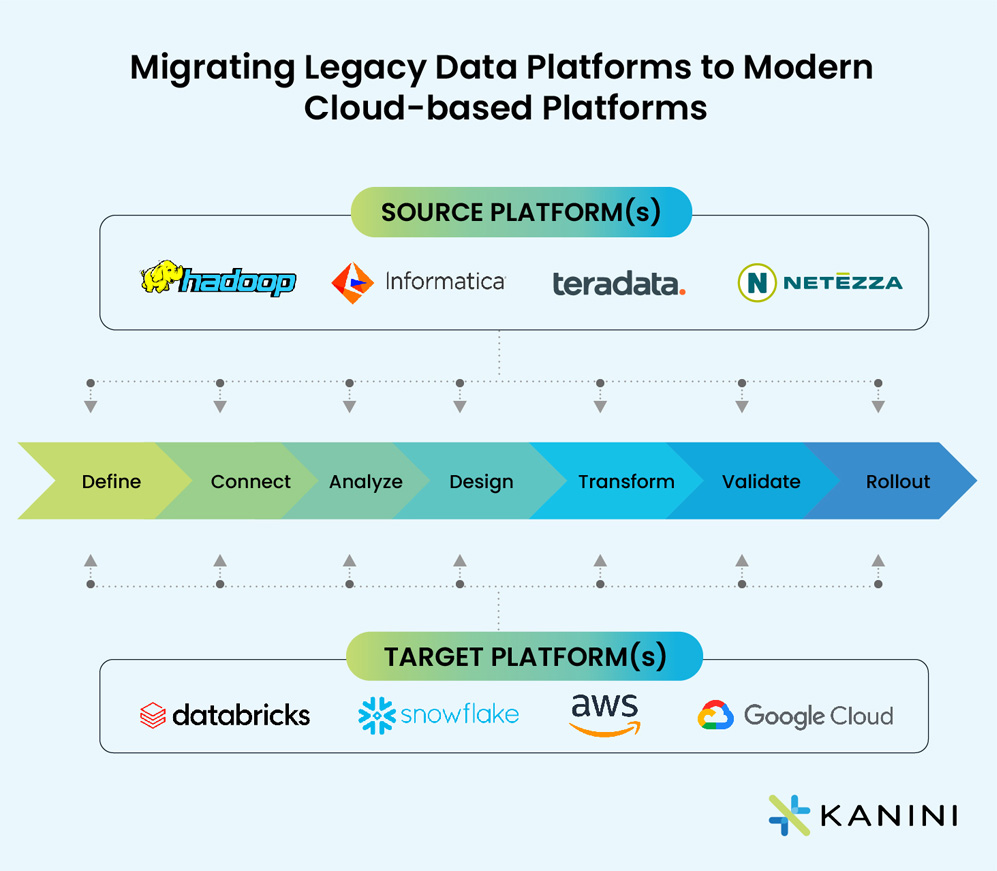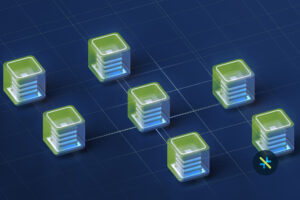“CDOs, CDAOs, and data leaders of 40.7% of Fortune 1000 organizations participating in the Data and Analytics Leadership Annual Executive Survey 2023 have identified data modernization as their top investment priority.”
Source: NewVantage Partners
Data is emerging as the most powerful catalyst in shaping today’s modern business enterprises. Right from operations to customer experience, supply chain logistics, governance, cybersecurity, and research & development, data is at the core of every process, policy, and innovation. This widespread presence and prowess of data serve as a primary driver for enterprise data platform modernization and increased adoption of cutting-edge cloud-based big data platforms. Enterprise data platform modernization and cloud migration therefore go hand in hand. To thrive in this dynamic data-driven environment, companies worldwide, across diverse industries, are increasingly embracing the cloud and other transformative technologies to harness the full potential of big data.
In this article, we will explore various challenges that prompt companies to retire from their legacy on-premises data systems—such as Hadoop, Teradata, Netezza, and Informatica—and consider enterprise data platform modernization to optimize for the present and future.
Common Roadblocks in Legacy Data Systems that Drive Enterprises Toward Data Platform Modernization
- The incompatibility of legacy systems with modern technologies leads to integration challenges that limit enterprises from taking advantage of advanced data analytics and AI. These technologies are critical for gaining deep insights, enabling self-service analytics, implementing predictive analytics, facilitating real-time data processing, driving automation, and supporting other advanced use cases of analytics and AI.
- Data siloes in legacy systems are the biggest impediment to business growth. When data from disparate source systems in diverse formats (unstructured, semi-structured, and structured) is leveraged holistically, it becomes more meaningful and delivers relevant and reliable actionable insights to each user set.
- Siloed governance is caused by siloed data. In the current regulatory landscape where compliance is crucial to avoid hefty non-compliance penalties and reputational damage, a single, consistent governance model becomes vital. Legacy data systems hinder the enforcement of advanced governance mechanisms such as granular role-based governance control, adaptive and self-service data governance across all enterprise data.
- Costly and cumbersome legacy systems make way for highly scalable and flexible cloud-based data platforms. To align costs to value, CIOs, CDOs, and data platform administrators of organizations are increasingly embracing fully managed platforms that allow automatic scaling of storage and compute resources to maximize performance and minimize costs.
- End of support, as in the case of the Netezza database, limits an organization’s modernization attempts as it hinders technological advancements and system upgrades. Adopting contemporary cloud-based solutions such as Snowflake, Databricks, and Azure Synapse Analytics, allows a more holistic and flexible approach to support extensive data and AI use cases.
Modern Big Data Platforms Align with the Latest Data Trends and Innovations
As organizations look to navigate challenges like compromised security, high infrastructure costs, limited data accessibility, and weakened application performance, the shift toward the cloud becomes crucial to keep up with the evolving data trends. Let’s understand how data platform modernization and adoption of modern cloud-based big data platforms enable organizations to stay abreast of the latest advancements and innovations in the era of big data and AI:
By sharing their data globally and across clouds, businesses can improve outcomes significantly and mitigate risks far more efficiently. Platforms like the Snowflake Data Cloud and Databricks support a shared data environment. Data processes such as replicating data across locations that are otherwise an ordeal with traditional data systems can be accomplished within minutes with the cloud facilitating high productivity, better collaboration, and holistic decision-making.
Siloed environments with different governance controls can no longer address the compliance stringencies of the present day; neither is a typical ‘one-size-fits-all,’ command-and-control-based IT governance capability enough to meet today’s complex compliance needs. Modern enterprises need to embrace adaptive governance where they can respond promptly to different business challenges with specific governance approaches.
A Strategic Data Platform Modernization Approach to Achieve Positive Outcomes
Enterprise data platform modernization calls for cloud migration. The core objective of data platform modernization and cloud migration is to overcome the hurdles of legacy systems. By strategically leveraging cloud resources, enterprises can maximize the value of data without incurring unnecessary expenses.

Partnering with KANINI has helped organizations spanning diverse industries including banking & financial services, healthcare, and manufacturing to build modernized data ecosystems that are efficient, durable, and secure. We assess your existing data infrastructure to help you identify the most suitable technologies in alignment with your business goals and ensure a seamless migration to contemporary cloud-based data platforms. Get in touch with our experts to accelerate your enterprise data platform modernization efforts.
Author









